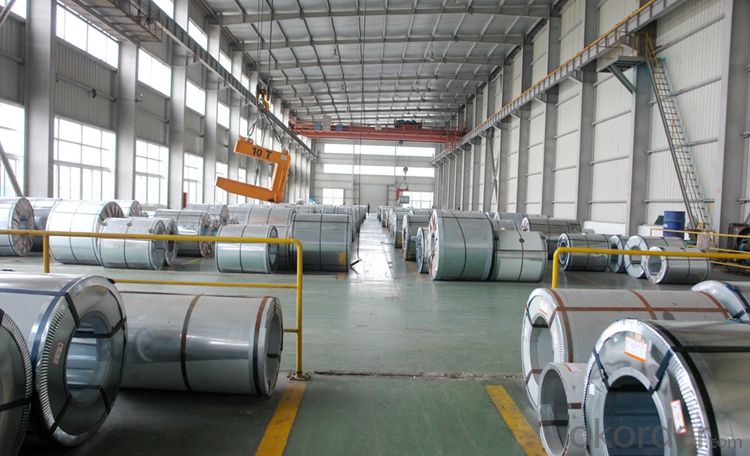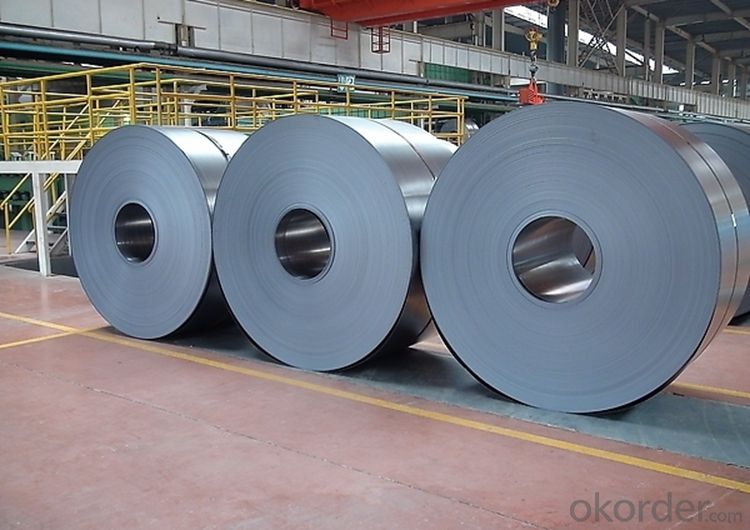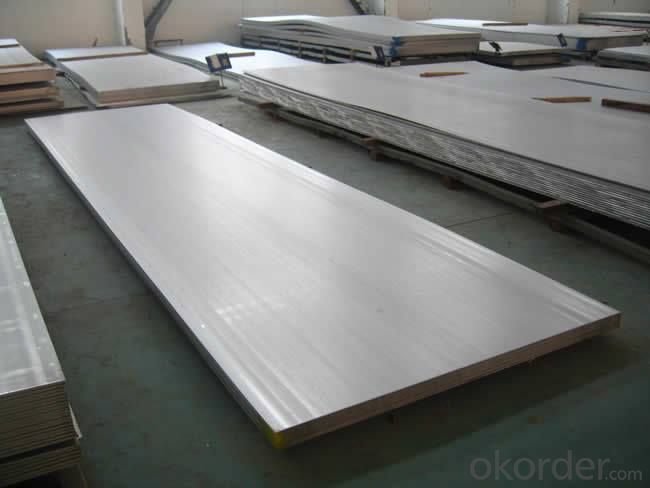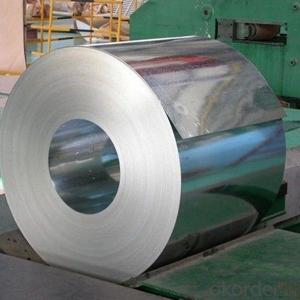304 Stainless Steel Made In China With Good Quality
- Loading Port:
- Huangpu
- Payment Terms:
- TT OR LC
- Min Order Qty:
- 50 m.t.
- Supply Capability:
- 10000 m.t./month
OKorder Service Pledge
OKorder Financial Service
You Might Also Like
Item specifice
Description for Stainless Steel Coils/Sheets:
Prodcut:Stainless Steel Coil
Thinckness: 0.20mm-8.0mm
Width:1000mm, 1219mm(4 feet), 1250mm, 1500mm, 1524mm(5 feet),
1800mm, 2000mm, 2200mm, 2500mm,and customizable
Ni:0.8~1.2% Cu:1.4~1.5% Cr:14
Standard: ASTM, JIS, GB, BS, DIN etc
Grade: 200series&300series&400series
Surface finish: 2B, BA, 8K, 6K, Mirror Finished, No1, No2, No4, Hair Line with PVC
Manufacture technology: cold rolled/hot rolled
Thickness Tolerance: +/-0.1mm
Width Tolerance: +/-10mm
200 Seriers: 201,202
300 Seriers: 301, 304, 304L, 316L, 309, 310S,321
400 Seriers: 410, 410S, 409L,430
Specifications for Stainless Steel Coils/Sheets:
Type | 200 series,300 series,400 series |
Thickness | 1.8-8.0mm |
Widthness | 1000/1219/1500mm |
Technique | Hot Rolled/Cold Rolled |
About 20 Tons | |
Finish | NO.1/NO.2B |
Place of Origin | Made in China |
MOQ | 18 ton |
Color | Black,Mirror Finished |
Standard | ASTM, JIS, GB, BS, DIN etc |
Exporting countries | Peru,India,Pakistan,Singpore,Vietnam,South Korea,Malaysia etc. |
After-sales service | Factory Inspection |
Certifications | ISO,SGS |
Packaging | Standard export packing or following customer's demand |
Specifications for Stainless Steel Coils/Sheets:
Grade | C ≤ | Si ≤ | Mn ≤ | P ≤ | S ≤ | Ni ≤ | Cr ≤ |
201 | 0.12 | 0.75 | 7.00 | 0.045 | 0.045 | 1.00-1.28 | 13.70-15.70 |
202 | 0.15 | 1.00 | 2.25 | 0.045 | 0.045 | 4.07-4.17 | 14.00-16.00 |
304 | 0.08 | 0.75 | 2.00 | 0.045 | 0.03 | 8.00-11.00 | 18.00-20.00 |
304L | 0.035 | 0.75 | 2.00 | 0.045 | 0.03 | 8.00-13.00 | 18.00-20.00 |
309 | 0.15 | 0.75 | 2.00 | 0.045 | 0.03 | 12.00-15.00 | 22.00-24.00 |
310S | 0.08 | 1.50 | 2.00 | 0.045 | 0.03 | 19.00-22.00 | 24.00-26.00 |
316 | 0.08 | 1.00 | 2.00 | 0.045 | 0.03 | 10.00-14.00 | 16.00-18.00 |
316L | 0.035 | 0.75 | 2.00 | 0.045 | 0.03 | 10.00-15.00 | 16.00-18.00 |
321 | 0.04-0.10 | 0.75 | 2.00 | 0.045 | 0.03 | 9.00-13.00 | 17.00-20.00 |
405 | 0.08 | 0.75 | 1.00 | 0.045 | 0.03 | 0.06 | 11.5-13.5 |
409 | 0.089 | 1.00 | 1.00 | 0.045 | 0.05 | 0.06 | 10.50-11.75 |
410 | 0.15 | 0.75 | 1.00 | 0.045 | 0.03 | 0.06 | 11.5-13.5 |
420 | 0.16-0.25 | 1.00 | 1.00 | 0.040 | 0.03 | 0.06 | 12.00-14.00 |
430 | 0.12 | 0.75 | 1.00 | 0.045 | 0.03 | 0.06 | 16.00-18.00 |
Detail picture for Stainless Steel Coils/Sheets



Application of Stainless Steel Coils
(1)Boiler heat exchanger,
(2)Chemical industries,
(3)Hardware fields,
(4)Construction material,
(5)Kitchen utensils,
(6)Building construction,
(7)Medical equipment,
(8)Chemical tank,
(9)Pipe etc
Export Markets for Stainless Steel Coils/Sheets:
Our target market is the international market. Every year we export most of products to countries like India, Pakistan, South Korea, Brazil, Australia, South Africa, Spain, Sri Lanka, Taiwan, Hong Kong, etc.
FAQ for Stainless Steel Coils/Sheets:
Q:How to order?
A: Please send us your purchase order by email or fax .or you can ask us to send you a proforma invoice for your order .We need to know the following information for your order.
1) Shipping information-company name, street address, phone number, fax number, destination sea port
2) Product information – Quantity, Specification (steel type, thickness, width, surface finish)
3) Delivery time required
4) Forwarder's contact details if there's any in China
FAQ for Stainless Steel Coils/Sheets:
Q:What are the advantages of your company ?
A: We have many professionals, technical personnel, more competitive prices and best after-dales service than other stainless steel companies.
Q:Can you arrange the shipment ?
A: Sure we can help you with the shipment. We have forwarders who have cooperated with us for many years.
- Q:How are steel coils inspected for surface finish after processing?
- Steel coils are typically inspected for surface finish after processing using visual and tactile methods. Trained inspectors visually examine the coils for any imperfections, such as scratches, dents, or uneven coating. They also run their fingers over the surface to detect any irregularities. Additionally, advanced technologies like digital imaging systems and laser scanners are employed to provide accurate and detailed analysis of the surface finish.
- Q:How are steel coils inspected for edge quality?
- Steel coils are inspected for edge quality through a combination of visual inspection and non-destructive testing methods. Visual inspection involves a thorough examination of the edges of the coils to identify any visible defects such as cracks, chips, or uneven edges. This is typically done by trained inspectors who carefully inspect the entire length of the coil. Non-destructive testing methods are also used to detect any hidden defects or imperfections in the edges of the steel coils. These methods include ultrasonic testing and magnetic particle inspection. Ultrasonic testing involves the use of high-frequency sound waves to identify any internal flaws or discontinuities in the steel. Magnetic particle inspection, on the other hand, uses magnetic fields and particles to identify any surface or near-surface defects in the steel. Both visual inspection and non-destructive testing methods play a crucial role in ensuring the edge quality of steel coils. By conducting these inspections, manufacturers can identify and address any defects or imperfections in the edges of the coils, ensuring that they meet the required quality standards.
- Q:What are the different methods of coil blanking for irregular shapes?
- There are various methods of coil blanking for irregular shapes, including laser cutting, waterjet cutting, and die cutting. Laser cutting involves using a high-powered laser beam to cut through the coil material, providing precise and intricate cuts. Waterjet cutting uses a high-pressure stream of water mixed with abrasive material to cut through the coil, offering flexibility and accuracy. Die cutting utilizes a custom-made die to stamp out the desired shape from the coil material, ensuring uniformity and efficiency. Each method has its own advantages and suitability depending on the specific requirements of the irregular shape being blanked.
- Q:What are the cost implications of using steel coils in manufacturing?
- The cost implications of using steel coils in manufacturing can vary depending on several factors. Firstly, the price of steel coils themselves can fluctuate due to market conditions, supply and demand, and global trade policies. Additionally, the cost of transporting and storing steel coils can add to the overall expenses. Furthermore, the manufacturing process may require additional equipment or specialized machinery to handle and process steel coils, which can impact the overall production costs. However, steel coils are often considered a cost-effective option in manufacturing due to their durability, versatility, and recyclability, which can contribute to long-term savings and environmental benefits.
- Q:Does anyone know what is 12 gage Cold Rolled Steel meaning? Also, help me to describe it.Thank you so muck ~!Mark Lin
- It's gauge.
- Q:Can steel coils be customized in terms of size and thickness?
- Yes, steel coils can be customized in terms of size and thickness. Manufacturers have the capability to produce steel coils in various sizes and thicknesses to meet the specific requirements of different industries and applications.
- Q:What is the role of steel coils in the supply chain?
- The supply chain heavily relies on steel coils, especially in the manufacturing and construction sectors. These coils, typically made from hot-rolled steel, are essential raw materials for a wide range of products like automobiles, appliances, construction materials, and industrial goods. The journey of steel coils in the supply chain begins with the production of raw steel, which is then processed and shaped into coils at steel mills. These coils are then transported to different manufacturing facilities where they are transformed into finished products. Throughout this process, steel coils act as an intermediary product that is easy to transport, stack, and manipulate according to various manufacturing requirements. One major advantage of using steel coils in the supply chain is their strength and durability. Steel possesses high tensile strength, enabling it to withstand substantial loads and pressures. This makes steel coils perfect for applications that require sturdy materials like structural components in buildings, heavy machinery, and vehicles. Furthermore, steel coils offer high customization, allowing manufacturers to tailor their dimensions and specifications to meet specific needs. This flexibility ensures the efficient delivery of steel coils that align with the requirements of diverse industries and projects. In terms of logistics, steel coils are typically transported in large quantities using specialized equipment such as flatbed trucks, railcars, or even ships. Effective logistics planning is crucial to ensure timely delivery and minimize transportation costs. Additionally, proper storage and handling are vital to prevent damage to the coils during transit and storage. Overall, steel coils play a vital role in the supply chain as versatile raw materials that can be shaped and transformed into various end products. Their strength, durability, and flexibility make them an essential component in industries that rely on high-quality steel, ultimately contributing to the overall economic growth and development of numerous sectors.
- Q:Don't ask me why, but I took my stainless steel ring and I heated it up with my gas stove. I stuck it in there til the metal turned red, and the flame which is normally blue turned orange for some reason when the metal turned red. Anyway, afterwards i cooled it off in water and now it's all discolored and it feels different. It's weighs less and it doesn't feel the same. Plus, it's ugly cause it's all black and blue. What happened? Someone help
- I would first check it with a magnet. If it is attracted to the magnet it has too much steel in it and that is what oxidized,not the CR. U might try to clean it with a good acid .
- Q:How are steel coils used in the manufacturing of conveyor belts?
- Steel coils are used in the manufacturing of conveyor belts as they provide the necessary strength and durability required for transporting heavy loads. The steel coils are processed and shaped into strong, flat strips that are then woven or bonded onto the belt's surface, enhancing its strength and resistance to wear and tear. This ensures that the conveyor belt can efficiently and reliably carry materials across various industries, including mining, logistics, and manufacturing.
- Q:What are the different coil winding methods used for steel coils?
- There are several different coil winding methods used for steel coils, each with its own advantages and applications. 1. Layer winding: This is the most common method used for steel coils. It involves winding the steel strip or sheet in concentric layers, one on top of the other, to form a coil. This method is ideal for thin, narrow strips and provides good stability and strength to the coil. 2. Cross winding: In this method, the steel strip is wound in a crisscross pattern, alternating the direction of each layer. This helps to distribute the stress evenly across the coil and prevents the coil from becoming unstable. Cross winding is commonly used for thicker or wider steel strips. 3. Spiral winding: This method involves winding the steel strip in a spiral pattern, forming a coil with a gradual increase in diameter. Spiral winding is often used for large or heavy steel coils, as it allows for easy handling and transportation. It also provides good stability and prevents the coil from collapsing. 4. Toroidal winding: This method is used for producing toroidal or donut-shaped coils. The steel strip is wound in a circular path, with each layer placed inside the previous one. Toroidal winding is commonly used in applications such as transformers, where the coil needs to have a specific shape and size. 5. Interleaved winding: This method involves interleaving two or more steel strips together during the winding process. Interleaved winding is used to produce composite coils with different materials or thicknesses. It provides enhanced strength, stability, and allows for customized designs. Each of these coil winding methods has its own advantages and is used based on the specific requirements of the steel coil application. The choice of method depends on factors such as strip thickness, width, tensile strength, and desired coil properties.
1. Manufacturer Overview |
|
|---|---|
| Location | |
| Year Established | |
| Annual Output Value | |
| Main Markets | |
| Company Certifications | |
2. Manufacturer Certificates |
|
|---|---|
| a) Certification Name | |
| Range | |
| Reference | |
| Validity Period | |
3. Manufacturer Capability |
|
|---|---|
| a)Trade Capacity | |
| Nearest Port | |
| Export Percentage | |
| No.of Employees in Trade Department | |
| Language Spoken: | |
| b)Factory Information | |
| Factory Size: | |
| No. of Production Lines | |
| Contract Manufacturing | |
| Product Price Range | |
Send your message to us
304 Stainless Steel Made In China With Good Quality
- Loading Port:
- Huangpu
- Payment Terms:
- TT OR LC
- Min Order Qty:
- 50 m.t.
- Supply Capability:
- 10000 m.t./month
OKorder Service Pledge
OKorder Financial Service
Similar products
New products
Hot products
Related keywords
































